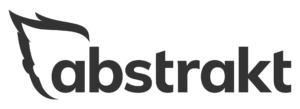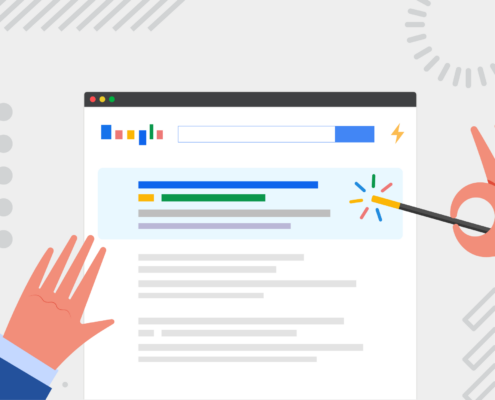

Do you ever feel like your website is the best-kept secret on the internet? It’s time to roll out the red carpet for your site with some smart SEO tactics that can get you noticed by search engines and audiences alike.
What Is SEO?
SEO, or Search Engine Optimization, is the art and science of tuning your website so it ranks higher on search engines like Google. When you optimize your site, you’re essentially making it more attractive not only to search engines but also to the visitors who come via these engines. It involves tweaking everything from the content you write to the way your website is structured. Think of SEO as setting up signposts and directions to make sure search engines can find your little corner of the internet, understand what you offer, and show it off to users who are searching for exactly what you’ve got.
SEO plays a significant role in generating inbound leads by increasing visibility on search engine results pages (SERPs) and attracting targeted traffic. When you optimize your website with relevant keywords, visitors are more likely to find it and convert users into leads.
Keep Reading: Understanding SEO Lead Gen
Why Is SEO So Important?
Think of SEO as your digital matchmaker. It’s what helps your website and your ideal customer find each other among the billions of web pages out there. The internet is a vast ocean, and without SEO, your site is just a drop that might never be noticed. Here’s why improving your website’s SEO matters:
Visibility and Branding: When people search for your products or services, you want to appear as high in the search engine rankings as possible. Not only does this increase the likelihood of clicks, but repeated visibility also enhances brand recognition and trust.
Traffic Boost: Higher rankings often translate into more traffic. SEO helps you attract more quality traffic—people genuinely interested in what you have to offer, increasing the chances of converting visitors into customers.
User Experience: Good SEO means a better user experience. Google favors websites that are fast, easy to navigate, and packed with useful information. By optimizing your site, you’re also refining the user experience, which can keep people coming back.
Credibility and Trust: Websites that appear higher in search results are often viewed as more credible and trustworthy. In the digital age, your Google rank could be considered a badge of trustworthiness.
Competitive Advantage: If your competitors are using SEO and you’re not, guess who’s likely to garner more attention and win over more customers? Investing in SEO isn’t just a marketing tactic; it’s a strategic component of your business’s ability to thrive in a competitive marketplace.
By understanding the importance of SEO, you can take deliberate steps to not only boost your online presence but also ensure that your digital doors are open and inviting to potential customers around the clock.
How to Improve Your Website’s SEO Value
Let’s dive into 9 strategies for your business to improve SEO value.
Identify Your Target Keywords
Choosing the right keywords is like selecting the perfect clothes for a first date—you want to make the best impression. Keywords are the terms and phrases that your potential customers type into search engines when looking for products or services like yours. To optimize your website for SEO, identifying and strategically using these keywords is crucial. Here’s how to nail it:
Understand Your Audience: Dive deep into your audience’s preferences and behaviors. What are their pain points? What language do they use to describe your products or services? Tools like Google Analytics can offer insights into the terms your existing customers use.
Use Keyword Research Tools: Leverage tools like Google Keyword Planner, Ahrefs, or SEMrush to discover keywords relevant to your business. These tools can provide data on search volume, competition, and even seasonal trends.
Consider Search Intent: Keywords can be classified based on the intent behind the search. Are people looking for information, or are they ready to buy? Tailoring your content to match this intent—using informational keywords for blog posts and more transactional keywords for product pages—can improve your SEO results.
Long-Tail Keywords: Don’t just focus on broad, highly competitive keywords. Long-tail keywords, which are longer and more specific phrases, often have lower competition and attract more qualified traffic. For instance, instead of targeting “running shoes,” you might target “women’s trail running shoes for overpronators.”
Local SEO: If you operate locally, include geo-specific keywords in your strategy. Keywords like “veterinarian in Atlanta” or “Miami tax consultant” can help you more effectively attract a local audience.
By identifying the right mix of keywords, you set a solid foundation for your SEO efforts, ensuring that the traffic you attract to your site is not only ample but also perfectly aligned with your business offering.
Use Headers Strategically
Headers are not just there to make your content look pretty; they’re crucial for SEO. Think of them as signposts that guide both readers and search engines through the content of your page. Effective use of headers helps improve user engagement and search engine rankings. Here’s how to make the most of them:
When crafting headers, it’s essential to incorporate your target keywords naturally. This not only highlights the relevance of your content to search engines but also ensures that it’s easily scannable for readers. Your H1 tag, which is typically the title of your page or post, should clearly state what the content is about and include a primary keyword when possible. Subsequent headers (H2, H3, etc.) should help to organize and break up content in a way that progressively guides the reader through your article.
For instance, in a blog post about healthy eating, an H1 might be “The Beginner’s Guide to Eating Healthy,” with H2s like “Understanding Macronutrients” and “Essential Foods for a Balanced Diet.” Each of these headers should lead into content that delivers on the promise of the headers, using subheadings to further detail sections and keep the audience engaged.
The strategic use of headers improves readability and engagement and boosts SEO by signaling to search engines the structure and relevance of your content. This methodical approach to organizing content helps search engines better understand and rank your pages, making your website more visible to potential visitors.
Optimize Your Slugs and Metas
The slug and meta description of your web page plays a crucial role in improving your SEO by affecting how your pages are viewed by search engines and potential visitors in search results. Here’s what you need to know to get them right:
A slug is the part of the URL that identifies a particular page on your website in a readable form. Crafting an effective slug is not just about simplicity, but also about including your primary keyword to enhance SEO performance. For instance, if you’re discussing SEO best practices, a good slug for your page would be something concise and clear like:
✅ Good Slug: yourwebsite.com/seo-best-practices
In contrast, a less effective slug might be too long, vague, or unrelated to the content, such as:
❌ Bad Slug: yourwebsite.com/12-09-2022/blogpost_about_SEO!!!
By keeping your slugs straightforward and relevant, you help both users and search engines quickly understand what the page is about, boosting your page’s relevance in search results. Consider placing these examples in a visually distinct box to catch the reader’s eye and provide a clear, quick reference for what makes a good slug versus a bad one.
While not directly influencing search rankings, meta descriptions are incredibly important for click-through rates. This brief summary appears under your page title in search results and serves as an ad for your content. A well-crafted meta description should be compelling, include target keywords, and encourage the searcher to click on your link. It should summarize the page content attractively, making a promise that what’s on the page will solve the reader’s problem or answer their query.
Here’s how you can make the most out of your slugs and meta descriptions:
- Keep slugs short and sweet: Limit your slugs to 3-5 words to ensure they remain succinct and to the point.
- Use target keywords smartly: Include a primary keyword in both the slug and the meta description to enhance relevancy.
- Make it inviting: Write meta descriptions like mini-ads for your content. You want them to be engaging enough that users feel compelled to click through.
By optimizing these elements, you not only make your site more user-friendly but also enhance its discoverability and attractiveness in search results.
Consider Your Content Strategy
Before you write a single word, it’s crucial to know who you’re writing for. Develop buyer personas that reflect your typical customers—consider their challenges, needs, and online behaviors. This will guide the type of content you create, ensuring it resonates and engages effectively.
Create Valuable and Relevant Content
Each piece of content should offer value to your readers, whether it solves a problem, provides insights, or entertains them. Search engines favor high-quality, relevant content, which will help your website rank better.
- Answer Key Questions: Use tools like Answer the Public or Google’s “People also ask” to find common questions in your niche.
- Educational Content: How-tos, tutorials, and guides are excellent for capturing traffic from users seeking to learn.
- Industry Insights: Share your expertise on trends, changes, and forecasts in your industry to attract a professional audience.
With the right SEO content marketing strategy in place, you can reach more users who are actively researching your subject matter expertise. Let’s examine how to effectively plan, implement, and optimize your SEO content marketing strategy.
Keep Reading: Building an SEO Content Marketing Strategy
Use Multimedia
Text alone can be monotonous. Enhance your content with images, videos, infographics, and interactive elements. These can help explain complex information more easily and are engaging, keeping visitors on your page longer, which is a positive signal to search engines.
- Infographics: Break down data or processes into easy-to-understand visuals.
- Videos: Create tutorial videos or product demos to engage users who prefer visual learning.
- Interactive Content: Quizzes or polls to increase user interaction and time spent on the page.
Update Regularly
The internet is always evolving, and so should your content. Regular updates not only keep your content relevant but also signal to search engines that your site is active, which can boost your rankings.
- Review Periodically: Set a schedule to review and update your content, especially your most visited pages.
- Respond to Trends: Quickly updating your content to address recent trends can give you an edge in search results.
By crafting a dynamic content strategy focused on your audience’s needs and search behavior, you set the foundation for strong SEO performance. Next, we’ll discuss how strategically placed internal links can further enhance your SEO efforts.
Taking your SEO game to the next level might seem daunting, but it doesn’t have to be a solo journey. At Abstrakt Marketing Group, we specialize in crafting SEO strategies that not only boost your site’s visibility but also enhance its overall performance.
Strategically Place Internal Links
Internal linking isn’t just about connecting your website’s content; it’s an art form that boosts SEO while enhancing the user experience. When you strategically place links within your site, you create a network of pages that encourage deeper exploration and longer visitor sessions, which are positive signals to search engines.
By linking relevant articles, guides, or product pages within your content, you guide visitors through your website, effectively mapping out a journey for them. This not only makes your site stickier, encouraging users to spend more time engaged with your material, but it also distributes page authority across your site, boosting the SEO performance of individual pages.
For example, if you write a blog post about the benefits of digital marketing, linking to a case study on your site that demonstrates these benefits in action keeps the reader engaged and demonstrates the depth of your expertise. Moreover, using descriptive anchor texts that include relevant keywords can help these pages rank better for those terms.
Effective internal linking creates a better-structured, more informative site that search engines love. It’s one of the simplest yet most powerful tools in your SEO arsenal.
Fine-Tune Your CTAs
Crafting compelling calls to action (CTAs) is crucial for converting website visitors into leads and improving your SEO. A well-placed and well-worded CTA can guide users through the sales funnel, encouraging them to take the desired action, whether it’s subscribing to a newsletter, downloading a resource, or making a purchase. Here’s how to fine-tune your CTAs for maximum impact:
- Visibility is Key: Your CTA should stand out and be easy to find. Place your CTAs in strategic locations where visitors naturally look, such as the end of a compelling blog post or in the upper half of your homepage.
- Use Action-Oriented Language: Start your CTAs with strong command verbs like “Discover,” “Start,” “Join,” or “Learn.” This direct approach motivates action by creating a sense of urgency and excitement.
- Offer Value: Make it clear what the visitor will gain by clicking on your CTA. If you’re offering a free trial, for example, emphasize the trial’s benefits rather than simply saying, “Sign up for free.”
- Make It Relevant: Tailor your CTAs to fit the content on each page and the stage of the buyer’s journey. A visitor on a product page might be more receptive to a “Buy Now” button, while a visitor on an informational blog might respond better to an offer for a free guide.
By paying close attention to the design and placement of your CTAs, you can significantly increase the chances of turning passive browsers into active participants in your business’s growth.
Refresh and Update Older Content
Keeping your website’s content fresh and up-to-date is an often overlooked but crucial aspect of maintaining strong SEO performance. As the digital landscape evolves and new trends emerge, updating older content can breathe new life into your pages, making them more relevant and appealing to both search engines and users. Here’s why it matters:
Refreshing your content not only ensures that the information remains accurate and useful but also gives you an opportunity to improve SEO by integrating new keywords, enhancing readability, and updating internal links. This process can lead to better user engagement, reduced bounce rates, and improved rankings. Begin by identifying blog posts or articles that are still generating traffic but could be improved or are slightly outdated. Update statistics, add new insights or tools that have emerged since the original publication date, and revise sections to reflect the latest industry standards or practices.
Moreover, refreshing content helps establish your site as a reliable resource for timely, accurate information, which is a key factor Google considers when ranking pages. By systematically updating your older content, you can keep your site dynamic and engaging, encouraging visitors to spend more time exploring your content. This, in turn, signals to search engines that your site holds valuable information.
When it comes to search engine optimization (SEO), content is king. However, not all onsite content is equally valuable for your SEO strategy. And in some cases, your content may be holding you back. Learn how to conduct a content audit here:
Maximize Your Domain Authority
Domain Authority (DA) is a search engine ranking score developed by Moz that predicts how likely a website is to rank on search engine result pages (SERPs). A higher DA score, which ranges from 1 to 100, suggests a greater potential to rank, making it a critical focus for any SEO strategy. Here are effective ways to boost your site’s domain authority:
Step 1: Acquire High-Quality Backlinks
One of the most influential factors in increasing your domain authority is the quantity and quality of backlinks pointing to your site. Focus on acquiring backlinks from reputable and relevant websites. You can do this by creating high-quality, shareable content, engaging in guest blogging, and participating in relevant industry forums and discussions.
Step 2: Improve Internal Linking Structure
Strengthening your internal linking helps distribute page authority throughout your site, which can improve the individual rankings of pages. Make sure each page links to more content, keeping users engaged and allowing search engines to crawl your site more effectively. Use descriptive, keyword-rich anchor text for these links.
Step 3: Enhance On-Page Content
The quality of your on-page content plays a vital role in domain authority. Ensure your content is not only informative and well-written but also optimized for relevant keywords without stuffing. Regular updates and the addition of multimedia elements like images and videos can also improve the quality and engagement levels of your content.
Step 4: Increase Site Loading Speed
Page speed is a direct ranking factor for Google’s search algorithms. A faster-loading site provides a better user experience and decreases bounce rates, which can contribute to higher domain authority. To enhance loading speed, optimize your images, leverage browser caching, and reduce server response time.
Step 5: Optimize for Mobile
With Google’s mobile-first indexing, having a mobile-friendly website is more important than ever. Ensure that your site is responsive and provides a good user experience on mobile devices. Use Google’s Mobile-Friendly Test tool to check how well your site works on mobile devices.
Step 6: Consider Social Media Engagement
While social signals are not a direct ranking factor for Google, a strong social media presence can lead to higher brand visibility and more backlinks. Engage with your audience on platforms like LinkedIn, Twitter, and Facebook to promote your content and increase its reach and potential for backlinks.
Focusing on these strategies can systematically improve your domain authority, which can lead to higher search engine rankings and more organic traffic to your site. Remember, improving domain authority is a long-term strategy that requires consistency and patience.
Key Takeaways
Mastering SEO is more than a tactic; it’s essential for boosting your online visibility and engaging more effectively with potential customers. Here’s what we’ve covered in our guide to enhancing your website’s SEO performance:
- Understanding SEO is Fundamental: It’s crucial to grasp the basics of SEO. It’s all about enhancing your site’s attractiveness to both search engines and users, which can dramatically increase your online traffic.
- Keyword Optimization is Key: Pinpointing and using the right keywords ensure you attract the right audience. This foundational step directs relevant traffic to your site, increasing the likelihood of conversion.
- Holistic Optimization Matters: From your meta tags to your content and everything in between, each element of your website should be fine-tuned to improve your search rankings. This comprehensive approach helps search engines easily index and rank your site.
- User Experience is Everything: SEO isn’t only about pleasing algorithms. A user-friendly website can make visitors want to stay longer and engage more deeply, directly impacting your SEO results.
- Content Strategy Drives Engagement: Quality content is the cornerstone of effective SEO. By providing valuable and relevant information, you attract more visitors and encourage them to spend more time on your site.
At Abstrakt Marketing Group, we’re equipped to help refine your SEO strategy or build one from the ground up. We’ll ensure your website attracts and retains high-quality leads. Partner with us to turn your website into an unbeatable lead-generation tool.
Ready to elevate your SEO game? Contact Abstrakt Marketing Group today and see how we can transform your digital presence.










